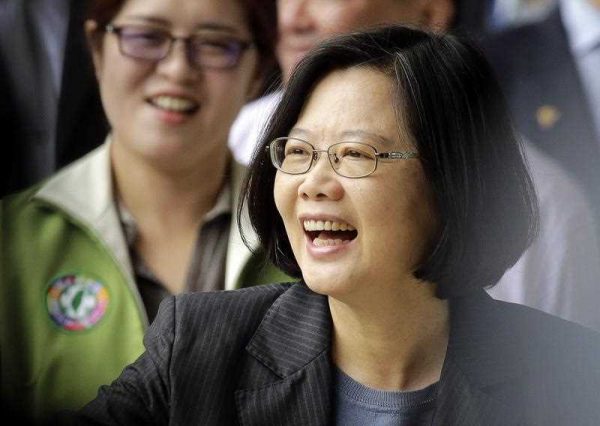An indigenous Taiwanese children’s choir performed a traditional song of blessing while facing the uniformed ranks of the Republic of China’s combined armed services military marching band and precision drill team. Such potent symbolic juxtapositions are typical of Taiwan’s contemporary public life.
Internationally, the most closely watched part of the ceremony was Tsai’s speech and in particular her references to cross-Strait relations and mainland China. Tsai’s comments have been parsed in meticulous detail to calculate any rise or fall in the quantum of cross-Strait tension.
The key issue has been Tsai’s willingness to affirm the so-called ‘1992 Consensus’. This is the formulation in which each side says that there is ‘one China’ but also agrees to set aside the differences in their respective definitions of ‘China’ in order to facilitate cross-Strait interactions.
The term refers to negotiations originally held in Hong Kong in 1992. During the Hu-Wen era in Beijing (2002–2012) and the Kuomintang (KMT) government of Ma Ying-jeou (2008–2016), the phrase ‘1992 Consensus’ acquired political and institutional force. The phrase was articulated by each side in order to forge a new, shared political and institutional reality. It expresses a distinctly Confucian view that a political reality develops from, not prior to, the language one uses to describe it.
As she had telegraphed beforehand, Tsai did not articulate the phrase ‘1992 Consensus’ in her speech. Rather, she specifically historicised the event the phrase refers to. She said that in 1992 the two sides had ‘arrived at various joint acknowledgements and understandings’. She noted ‘a spirit of mutual understanding and a political attitude of seeking common ground while setting aside differences’ and said, ‘I respect this historical fact’.
Tsai did, however, uphold the status of the constitution of the Republic of China, including the amendments of the early 1990s that created the concept of the mainland area and the Taiwan area. These reforms enabled legally-binding democratic elections for the office of president in Taiwan and have maintained cross-Strait peace by retaining the concept of ‘one China’ in the constitution.
Beijing was quick to criticise Tsai, referring to her comments as an ‘incomplete answer sheet’ and saying that she ‘did not explicitly recognise the 1992 Consensus and its core implications, and made no concrete proposal for ensuring the peaceful and stable growth of cross-Straits relations’.
The two sides will continue to wrestle over the status of the ‘1992 Consensus’ for the rest of Tsai’s term. Beijing will apply pressure on Tsai to articulate it and so place Taiwan within the political reality Beijing wants to impose. Tsai will explore other formulations that take her closer to or further from it. Her challenge will be to simultaneously manage relations with Beijing, fulfil the aspirations of the majority of the Taiwanese people and be true to her own political values.
Accordingly, the substance of Tsai’s inauguration speech concerned domestic issues. She restated her election campaign promises to revive Taiwan’s economy by stimulating new high-technology sectors, such as bio-technology and green energy. She spoke forcefully of the limited opportunities for young Taiwanese, the failures of the education system and growing inequality.
Tsai’s most important comments concerned Taiwan’s history. She called for social justice for Taiwan’s indigenous peoples through education, greater governance autonomy and economic opportunities. She addressed the history of authoritarianism in Taiwan and declared her intention to establish a truth and reconciliation commission in the presidential office.
Tsai’s proposal responds to a longstanding view on her side of politics that Taiwan never had a transitional justice process after democratisation in the early 1990s. Yet there is no standard international definition of transitional justice and there have been legal cases and compensation claims for many victims of martial law. Commemorations of the 1947 uprising against the KMT regime, which has been a national memorial holiday for 20 years, have also to an extent acknowledged the whole of the KMT authoritarian period from 1945 to 1987.
That there is an abiding demand for transitional justice expresses the very deep scars in Taiwanese society. Tsai’s proposal recognises that nearly 30 years after the end of martial law, Taiwanese society is grappling more than ever with its legacy.
Truth and reconciliation present very difficult choices for any leader. It may become an open-ended activist pursuit of criminal culpability. It may also fuel Taiwan’s bitter partisan politics. Many Taiwanese would say that those are reasonable outcomes.
Internationally, the effects of a truth and reconciliation process in Taiwan should not be underestimated. The Taiwanese will do nothing less than rewrite their history from an exemplar of liberal economic and political development in Asia to a history of violence. They will test received truths about the nature of economic development and socio-political progress that have underpinned policymaking and politics around the world for many decades.
Mark Harrison is Senior Lecturer in Chinese studies at the University of Tasmania and Adjunct Director of the Australian Centre on China in the World at the Australian National University.

